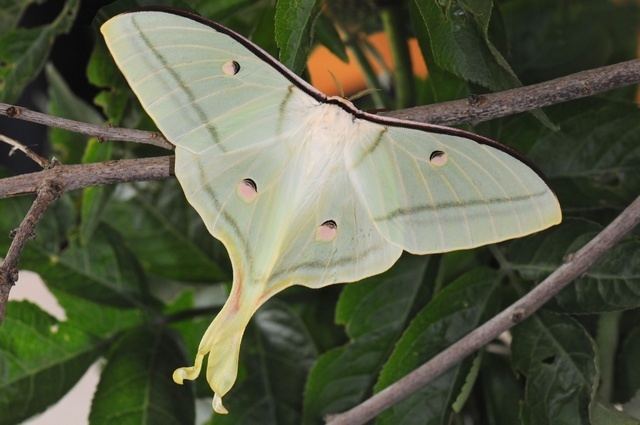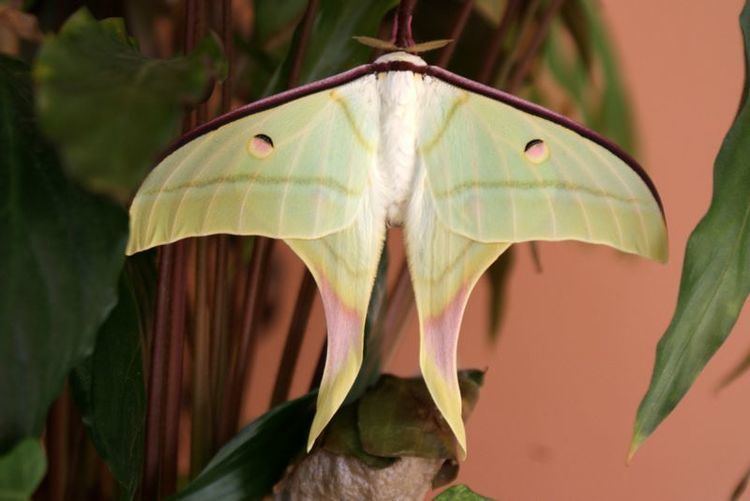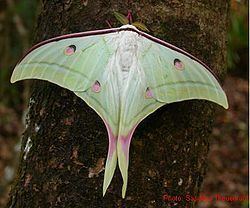Genus Actias Rank Species | ||
 | ||
Similar Actias, Actias ningpoana, Malaysian moon moth, Luna Moth, Actias dubernardi | ||
Indian moon moth actias selene ecloses
The Indian moon moth or Indian luna moth (Actias selene) is a species of Saturniid moth from Asia. This species is popular among amateur entomologists and is often reared from eggs or cocoons that are available from commercial sources. They are also known to fly mainly at night.
Contents
- Indian moon moth actias selene ecloses
- Indian moon moth actias selene
- Distribution
- Subspecies
- Adult
- Life Cycle
- Larva
- Pupa
- Host Plants
- References

Indian moon moth actias selene
Distribution

This moth is quite widespread, found from India to Japan and then south into Nepal, Ceylon, Borneo, and other islands in eastern Asia. Many subspecies live in Pakistan, Afghanistan, the Philippines, Russia, China, Java, Sri Lanka, Sumatra, and Borneo.
Subspecies
Adult

Male: Head, thorax, and abdomen white; palpi pink, prothorax with a dark pink band; legs pink. Fore wing very pale green, white at base; a dark pink costal fascia, darkest along subcostal vein: an outwardly-oblique pale yellow antemedial line ; two inwardly-oblique slightly curved submarginal lines; a pale yellow marginal band; a dark red-brown lunule at end of cell, with a grey line on it, bounding inwardly a round ochreous spot with pinkish centre. Hind wing similar to the fore wing ; the central portion of the tail pinkish. Female: The outer margin less excised and waved; the yellow markings less developed; the antemedial line of fore wing nearer the base., and that on hind wing absent; the tail less pink.
Life Cycle

Eggs are 2 mm, colored white with extensive black and brown mottling. Incubation lasts approximately 12 days and newly hatched larvae are red with a black abdominal saddle. Second instar larvae are all red with black heads. It is not until the third instar that larvae take on a green color. The developing larvae prefer humid conditions.
Larva
Larva apple-green; paired dorsal and lateral yellow spinous tubercles on each somite except the last; dorsal yellow hairs; lateral and ventral black hairs; the pad to anal claspers rufous.
Pupa
Cocoon pale brown and oval.
Host Plants
Banana
